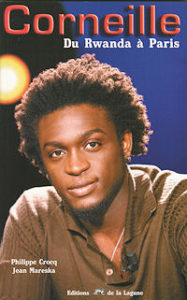| Angola | Burundi | Cameroun | Centrafrique | Congo-Brazzaville | Gabon | Guinea Ecuatorial | RD Congo | Rwanda | São Tomé e Príncipe | Tchad |
> Rwanda | Livres | Articles |
 See as well / Voir aussi / Veja também “l’Afrique centrale en général – Livres”
See as well / Voir aussi / Veja também “l’Afrique centrale en général – Livres”
Crocq, Philippe & Jean Mareska:
Corneille. Du Rwanda à Paris.
Enghein-les-bains: Éditions de la Lagune, 2006. 174 p.
Table des matières
McCoy, Jason T.:
Mbwirabumva (“I Speak to Those Who Understand”): Three
Songs by Simon Bikindi and the War and Genocide in Rwanda.
Ph.D. Florida State University (Tallahassee, Fla.), 2013. xi & 387 p.
Contents – PDF Download / Télécharger / Baixar 2.32 MB
Page créée 18/09/2017 © afrobib.com

 TABLE DES MATIÈRES
TABLE DES MATIÈRES CONTENTS
CONTENTS
 CONTENTS
CONTENTS CONTENTS
CONTENTS INHALT (Button Type)
INHALT (Button Type) CONTENTS
CONTENTS